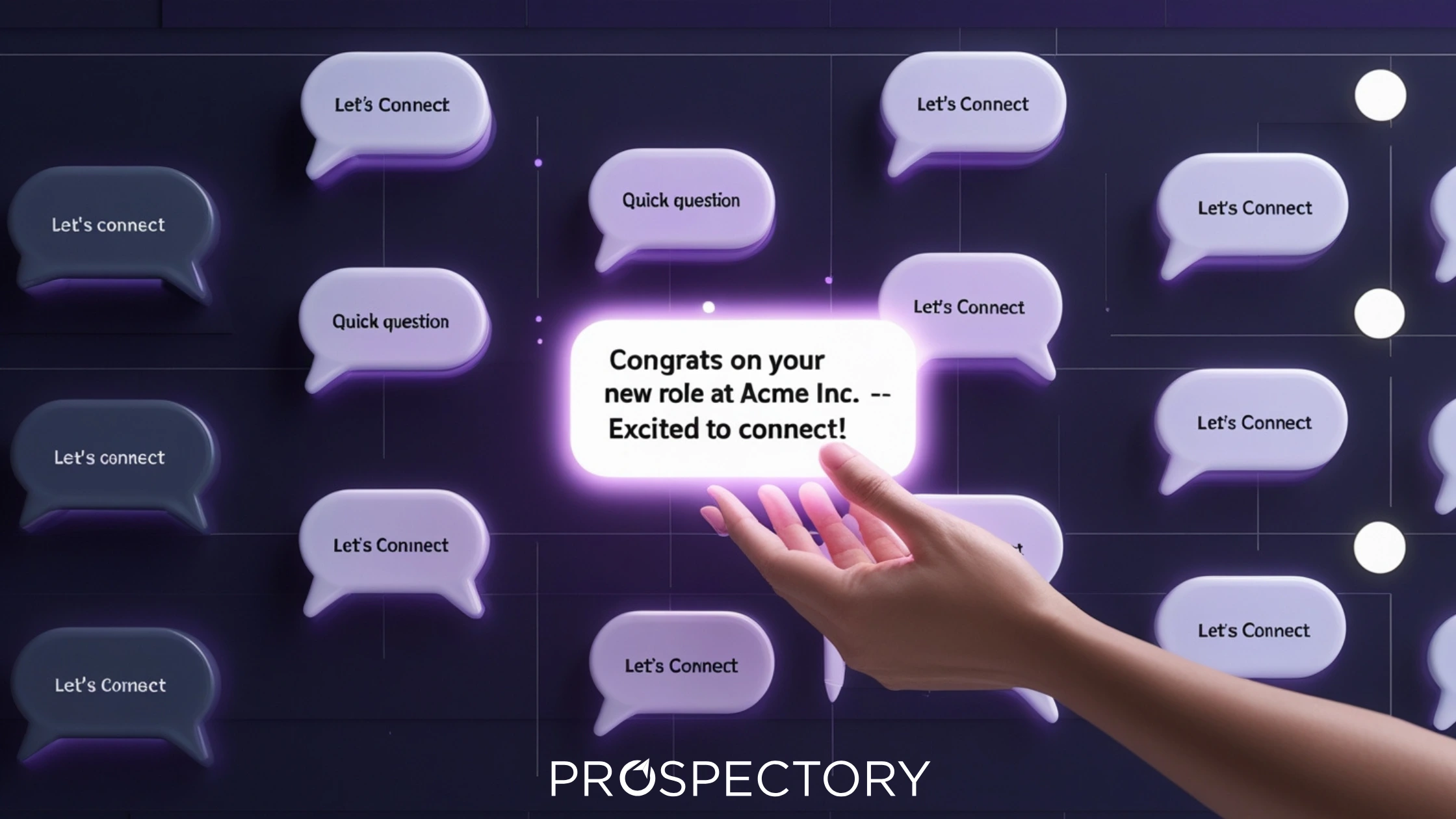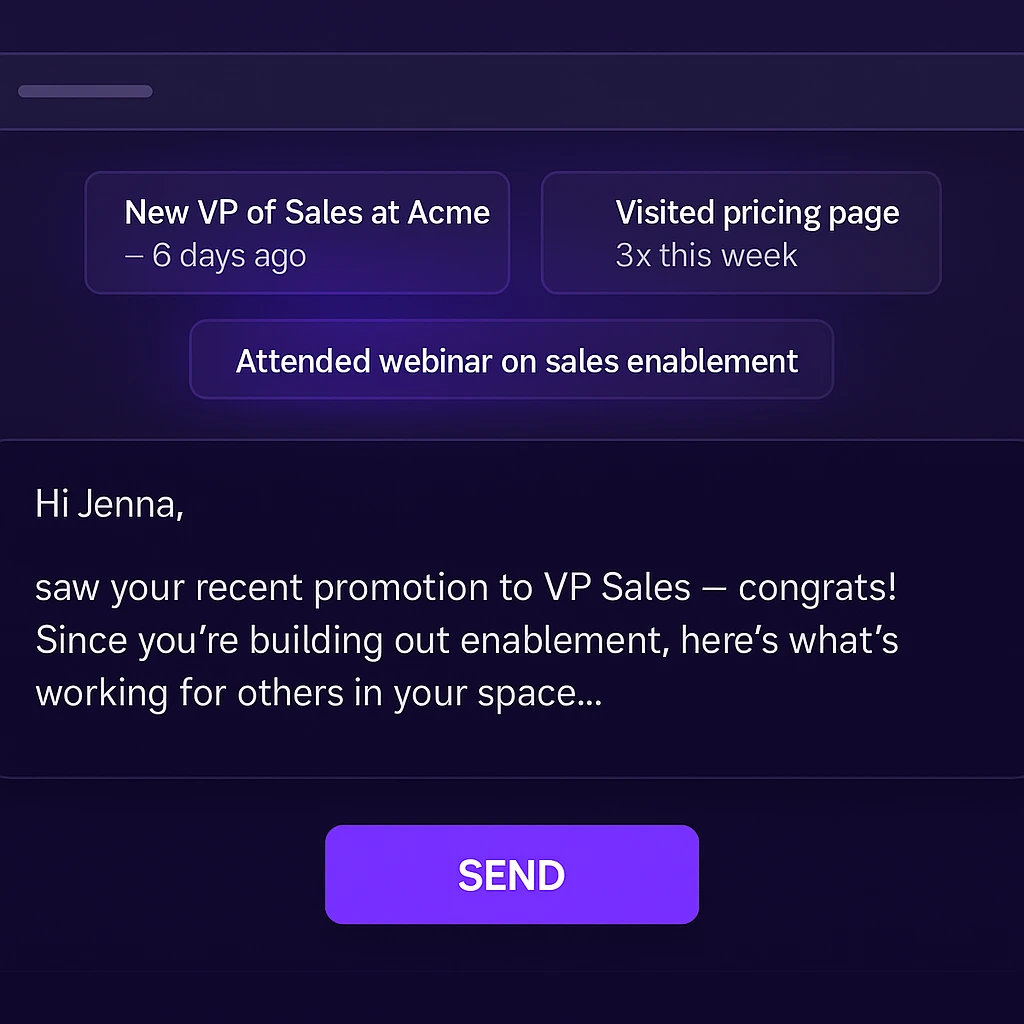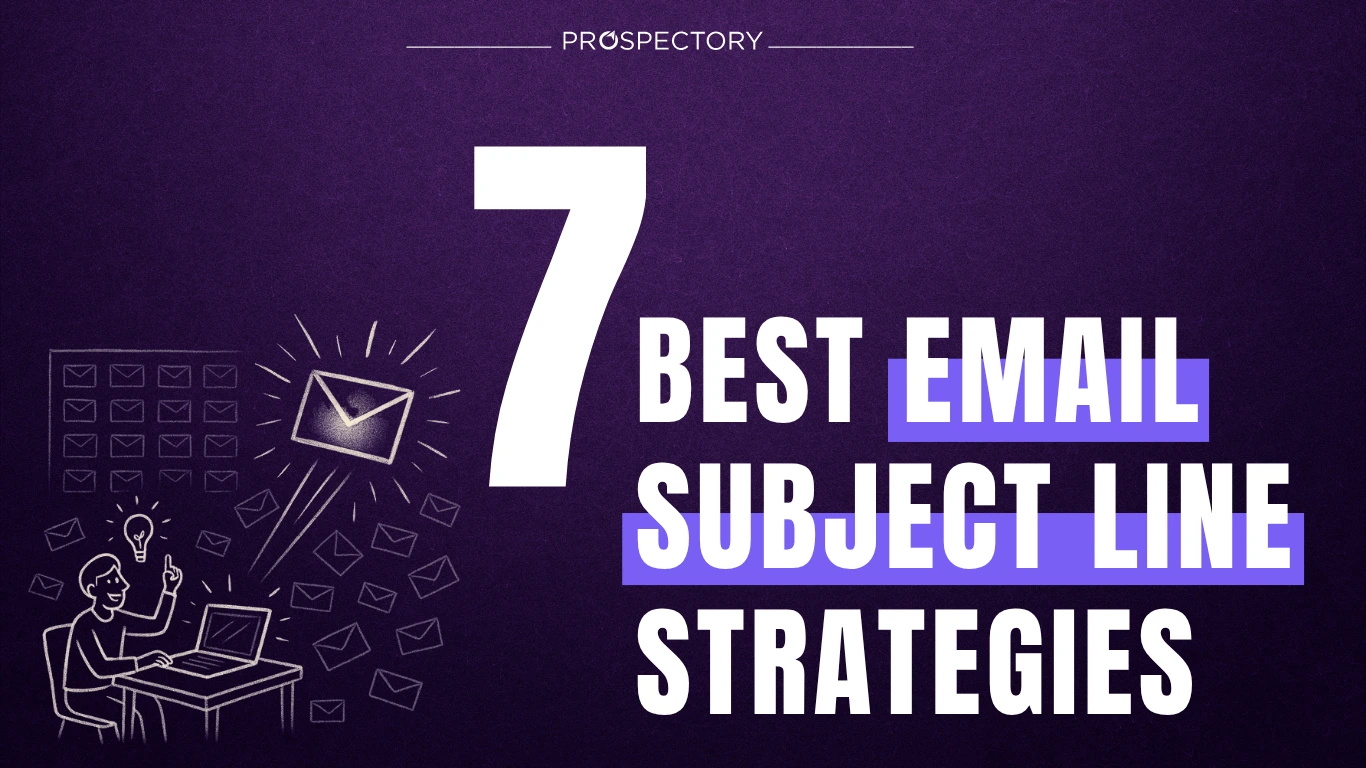
There’s an unspoken rule in sales that says you can either scale or personalize, but not both. Most SDRs learn this the hard way. The moment they try to increase their volume, their outreach becomes generic. The moment they slow down to personalize, they fall behind on metrics. This trade-off has existed for years, and it’s the reason prospecting has become the most dreaded and least effective part of the sales cycle.
But that trade-off? It’s no longer necessary.
Today, automated prospecting tools aren’t just about sending more emails faster. The best tools don’t replace the human touch; they protect it. They remove the manual, repetitive friction so SDRs can focus on what actually drives responses: relevance, timing, tone, and trust.
In this post, we’ll break down what true personalization means in 2025, why most tools get it wrong, and how platforms like Prospectory give SDRs a way to scale outreach without sounding like a template machine.
Ask any rep what’s slowing them down, and they’ll tell you it’s not laziness. It’s context switching.
To write a single email that feels relevant, most SDRs bounce between CRM entries, LinkedIn profiles, past emails, and enrichment tools. They try to figure out who the buyer is, what they care about, and how to connect the dots between their company’s value and the buyer’s current moment.
And then they do it all over again. Ten, twenty, thirty times a day.
It’s no wonder so many give up and go back to static templates.
Ironically, it’s not that reps don’t want to personalize; they simply don’t have the infrastructure to do it at scale.

Let’s be clear: dropping a {FirstName} tag and a {CompanyName} into a message isn’t personalization. That’s mail-merge-level customization, and buyers see right through it.
Real personalization is when the message reflects why you’re reaching out to this person right now with a tone that resonates and a next step that feels natural. It doesn’t require clever tricks. It requires context and timing.
Automated prospecting tools shouldn’t just send messages. They should surface these insights before the rep even writes a word.
This is where Prospectory stands out. Rather than focusing on brute-force email velocity, it starts by building a 360° buyer snapshot. The platform pulls together CRM data, job changes, intent signals, website visits, and past engagement, all into one view.
The result? SDRs open a prospect profile and instantly see:
Instead of juggling five tabs and improvising personalization, reps can work from a single dashboard that serves up actionable insight, not just raw data.
This makes personalization faster and smarter, and it’s the only way automation stops being mechanical.

One of the biggest fears reps have about automation is tone. Most AI-generated emails still sound like they were written by someone who’s never actually worked in sales, or worse, never spoken to another human.
Prospectory avoids this by adapting to the SDR’s natural tone. The platform learns from how reps have written in the past, understands different messaging styles across industries, and adjusts output based on the audience. A message to a Series A founder doesn’t read like one sent to a Director of Ops at a Fortune 500, because it shouldn’t.
Reps don’t lose their voice. They gain speed. And the approval workflow means they still control the final message; they just don’t have to start from scratch every time.
Most sequences are static. You send a series of five emails, three days apart, regardless of how the buyer responds, or doesn’t.
That’s lazy automation. And buyers know it.
Prospectory changes that introduce adaptive workflows. The platform tracks opens, clicks, replies, meeting requests, and even sentiment. If someone interacts early, the cadence adjusts. If they go cold, the tone and timing shift. If a prospect books, the rep is notified and the sequence stops automatically.
This turns cadences into conversations, not monologues. And that’s how you keep both your volume and your credibility intact.
Of course, automation only works if it’s done responsibly. We’ve seen how bad tools, or even good tools used carelessly, can backfire. The most common mistakes include:
Prospectory prevents these missteps with built-in guardrails:
Automation should feel like augmentation, not autopilot.
Teams using Prospectory’s automated prospecting tools don’t just send more emails. They send better ones, and it shows.
One B2B SaaS team saw:
But beyond numbers, reps reported something less measurable but more important: confidence. They stopped feeling like factory workers and started sounding like strategic professionals again.
When the work feels human, the results follow.
Let’s say it clearly: automation is not the goal. Relevance is.
The best prospecting strategies aren’t the fastest. They’re the ones that earn trust, show real understanding, and give the buyer a reason to engage. Automation only matters if it protects and enhances those fundamentals.
Prospectory doesn’t replace the SDR. It replaces the busywork. It lets smart, capable reps show up informed, prepared, and consistent.
You don’t have to choose between scale and quality anymore.
You just have to choose the right tools.
CTA
Want to see how Prospectory helps reps personalize at scale, without sounding like a robot?
[Book your demo now.]
It’s the process of identifying and connecting with businesses or decision-makers who could benefit from your solution. Or in other words, making a list of people that might want to buy your product that you'd like to approach.
It means using tools to handle outreach at scale like automating email campaigns, LinkedIn messages, and lead tracking. Automate means that part or all is done automatically. You set it up, then it runs by itself.
Because B2B deals often involve long cycles and multiple contacts, automation keeps communication consistent and organized. It's hard to keep track of so many people over so much time, Prospectory can help.
Automated sequences that target different decision-makers, CRM reminders, and tools that personalize emails based on job role or industry. Prospectory can help you automate your prospecting.
Not on its own, automation helps you get your foot in the door, but complex B2B deals still need human conversations to build trust and close.






